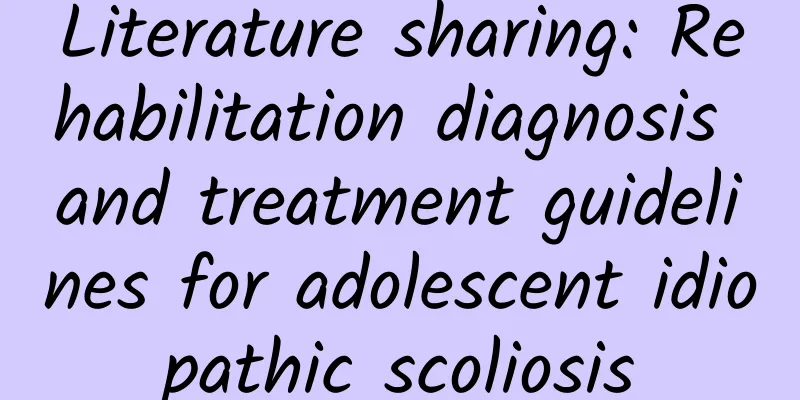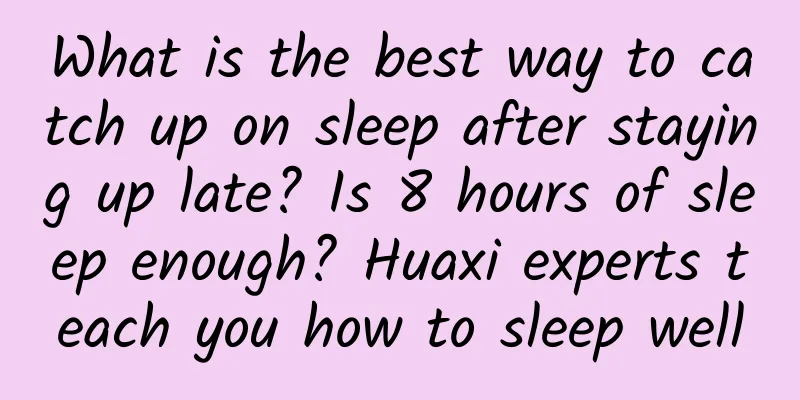Literature sharing: Rehabilitation diagnosis and treatment guidelines for adolescent idiopathic scoliosis

|
Literature sharing: Rehabilitation diagnosis and treatment guidelines for adolescent idiopathic scoliosis What is Scoliosis? Scoliosis is a complex three-dimensional spinal deformity, which is defined by the Scoliosis Research Society (SRS) as a Cobb angle >10° measured on a standing full spine coronal X-ray. The cause of idiopathic scoliosis is unclear, accounting for about 80% of the incidence of scoliosis. Among them, adolescent idiopathic scoliosis (AIS) is the most common idiopathic scoliosis, occurring between 10 and 18 years old, with a prevalence of 1.5%-3.0%. AIS affects the appearance of adolescents, causing back pain and psychological disorders, and in severe cases, leading to breathing difficulties and mobility impairment, which creates a heavy burden on families and society. At the same time, poor posture of adolescents is related to AIS, which can easily cause anxiety among parents and adolescents. Part I Screening for AIS 1. Necessity of AIS screening Recommendation : It is recommended to conduct scoliosis screening for adolescents aged 8 to 18 years old; for girls with a family history or aged 10 to 15 years old, the screening frequency should be increased. (Recommendation strength and evidence grade: 1A) Recommendation rationale : The incidence of AIS in women and men is 1.5:1~3:1. When the scoliosis angle is >40°, women are more likely to have scoliosis than men; and the risk of scoliosis progression in women is higher than that in men. Therefore, the screening frequency should be increased for women with a family history or aged 10 to 15 years, and family history should be included in the screening results. 2. Screening methods for AIS Recommendation : It is recommended to use three or more methods, including visual inspection, Adam flexion test, and trunk rotation angle (ATR) measurement, for AIS screening. (Recommendation strength and evidence grade: 1A) Recommendation rationale : The effect of using a single method to screen for AIS is poor, with problems such as low positive predictive value, high subjectivity, and low credibility of screening results. It is recommended to use a combination of visual inspection, Adam flexion test, and ATR measurement for screening, which can significantly increase the sensitivity and specificity of AIS screening; when ATR>5° is used as a positive screening indicator. Part II Functional Assessment of AIS 1. Motor function assessment of AIS Recommendation : It is recommended to evaluate the range of motion and muscle strength of the spine for AIS. (Recommendation strength and evidence grade: 2B) Recommendation rationale : In the coronal and sagittal planes, AIS has limited lateral flexion and rotation range of motion, and the severity of AIS coronal curvature is positively correlated with reduced spinal mobility. Regardless of whether AIS is treated with braces or surgery, limited spinal mobility has not improved after 20 years of follow-up. Studies have confirmed that the asymmetry of the paraspinal muscles on both sides of AIS may be related to the pathogenesis of AIS, manifested as muscle atrophy, increased fat infiltration, reduced type I muscle fibers, and reduced surface electromyographic activity of the multifidus and erector spinae muscles on the concave side. Similarly, there is also significant asymmetry in the muscle thickness of the transverse abdominal muscles, rectus abdominis, internal oblique muscles, and external oblique muscles on both sides of AIS. 2. Sensory function assessment of AIS Recommendation : It is recommended to evaluate low back pain in AIS. (Recommendation strength and evidence grade: 2B) Recommendation rationale : AIS is a potential risk factor for low back pain in adolescents. The literature reports that the incidence of low back pain in AIS is 27.5% to 58.8%, but there is no clear data. Although the causal relationship between low back pain and AIS is still unclear, low back pain seriously affects the quality of life of AIS and increases the incidence of insomnia and depression. 3. Balance function assessment of AIS Recommendation : Balance function assessment is not recommended for AIS (recommendation strength and evidence grade: 2B) Recommendation rationale : Currently, there is controversy about whether AIS affects postural balance function, and there is a lack of high-quality clinical research and systematic evaluation to support the assessment of balance function for AIS. Therefore, the impact, mechanism and assessment method of AIS on balance function need to be further studied. Part III Structural Evaluation of AIS 1. X-ray evaluation of AIS Recommendation : It is recommended to diagnose and review all patients suspected of AIS through standing full spine anteroposterior and lateral X-rays to assess the location and degree of scoliosis, vertebral development, and growth and development parameters. (Recommendation strength and evidence grade: 1A) Recommended rationale : Cobb angle measurement is the gold standard for the diagnosis of scoliosis. A Cobb angle of >10° on an anteroposterior X-ray is a confirmed diagnosis of scoliosis. On an anteroposterior X-ray, the assessor can determine the top vertebra and main curvature of the scoliosis, measure the scoliosis angle and rotation grading, and evaluate the flexibility of the scoliosis; on a lateral X-ray, the pelvic rotation and lumbosacral stability are evaluated. In addition, skeletal maturity, with the degree of ossification of the iliac wing epiphysis combined with the growth of the finger epiphysis, can predict the possibility of scoliosis progression. CT evaluation of AIS Recommendation : It is recommended to use spinal CT to evaluate the bone deformity of patients with vertebral abnormalities and formulate a preoperative plan. (Recommendation strength and evidence grade: 1B) Recommended rationale : CT can show the bony structural features of the AIS vertebrae in the horizontal plane and can directly assess the vertebral rotation angle. As a routine preoperative examination item for AIS patients, CT examination can assess the abnormal morphology of the pedicles; by simulating the size of the pedicle screws, the accuracy of pedicle screw placement and the safety of the operation can be improved. However, full-spine CT imaging produces a large amount of ionizing radiation, which seriously threatens the health of adolescent patients. MRI evaluation of AIS Recommendation : Spinal MRI is recommended to evaluate the spinal cord and nervous system in patients with neurological symptoms, atypical scoliosis, or scoliosis combined with intraspinal abnormalities. (Recommendation strength and evidence grade 1B) Recommended rationale : MRI can provide information on paravertebral soft tissue, intervertebral discs, ligaments, etc., evaluate spinal cord lesions such as diastematomyelia, tethered cord, syringomyelia, etc., and reduce surgical complications. However, MRI is expensive and poorly displays bone structure and lacks an overall view, so it is not recommended for routine examination of scoliosis. Part IV Rehabilitation treatment of AIS 1. Physical therapy 1. Core strength training Recommendation : It is recommended to add core strength training to the treatment of AIS. (Recommendation strength and evidence grade: 1C) Recommended rationale : The core muscles maintain the balance and stability of the trunk. Studies have found that the occurrence and progression of AIS may be related to paraspinal muscle dysfunction. Core strength training (3 times/week, 8-12 weeks) can effectively delay the progression of scoliosis in mild to moderate AIS (Cobb angle <45°), relieve pain, and improve respiratory function. However, for patients with moderate AIS (Cobb angle 20°~45°), core strength training should be used in conjunction with braces and other treatments. (ii) Scoliosis-specific training Recommendation : It is recommended to perform scoliosis-specific training (PSSE) for mild to moderate AIS (Cobb angle <45°). (Recommendation strength and evidence grade: 1B) Recommendation rationale : The 2016 SOSORT guidelines recommend the use of PSSE to prevent and control the progression of mild to moderate AIS. For mild to moderate AIS, PSSE alone or in combination with spinal brace treatment can significantly control the progression of scoliosis and improve the quality of life after 6 months. Most studies recommend that PSSE be prescribed 3 to 5 times a week, 60 to 90 minutes each time, for 10 to 24 weeks. However, the long-term efficacy of PSSE in mild to moderate AIS has not been determined, and there is a lack of direct evidence for its use in severe AIS (Cobb angle > 45°). 3. Gymnastics Recommendation : During clinical rehabilitation, physical exercises are recommended as an adjunct to treatment of mild AIS (Cobb angle 10°~20°). (Recommendation strength and evidence grade: 2D) Recommendation rationale : Studies have found that gymnastics can improve the muscle imbalance on both sides of the spine in mild AIS and prevent muscle atrophy and spinal stiffness. However, there is currently a lack of high-quality clinical research evidence. (IV) Traction Recommendation : Traction therapy is not recommended for moderate AIS; for severe AIS and AIS requiring surgery, auxiliary traction therapy may be considered if necessary. (Recommendation strength and evidence grade: 2D) Recommended rationale : Traction therapy aims to improve the extensibility of the spine and soft tissues. Currently, patients with severe scoliosis use head-pelvic ring traction before surgery to improve scoliosis and lung function and reduce surgical risks. However, there is currently no relevant evidence to support the efficacy of conservative treatment. 2. Occupational Therapy Recommendation : Occupational therapy intervention is recommended for AIS. (Recommendation strength and evidence grade: 2D) Recommendation rationale : Many high-quality guidelines have pointed out the importance of daily living activities and psychosocial functions. Occupational therapy focuses on life reconstruction and uses scoliosis correction as a way of living and learning, which may be a way to help AIS better return to family and society. 3. Rehabilitation Engineering 1. Braces Recommendation : Brace treatment is recommended for AIS patients with Cobb angle >20°, Risser sign <3, and scoliosis at a high risk of progression. (Recommendation strength and evidence grade: 1A) Recommendation rationale : The 2016 SOSORT guidelines recommend brace treatment for AIS with Cobb angle >20° and Risser sign <3. The brace can effectively control the progression of scoliosis and reduce the surgical rate through the three-point force and anti-rotation system; the correction effect of the brace is directly related to the initial correction rate in the brace, spinal flexibility and patient compliance. In general, it is recommended that AIS patients who wear brace correction undergo a full spine anteroposterior and lateral X-ray review every 6 to 12 months without the brace; for AIS in the growth peak period, it is recommended to review every 4 to 6 months. For AIS with a higher risk of progression during the growth period, it is recommended that the brace be worn for no less than 18 hours a day. 2. Orthopedic insoles Recommendation : It is not recommended to use orthotics alone to treat AIS; for AIS accompanied by foot deformity or lower limb biomechanical abnormalities, orthotics can be considered as an auxiliary treatment when necessary. (Recommendation strength and evidence grade: 2C) Recommendation rationale : AIS is often accompanied by pelvic tilt, lower limb biomechanical abnormalities, and gait abnormalities, but the above problems are weakly correlated with the progression of AIS. Although orthopedic insoles have the functions of adjusting plantar pressure, improving posture, and relieving foot pain, no studies have confirmed that orthopedic insoles can control the progression of scoliosis in AIS. Therefore, for AIS accompanied by foot deformities or lower limb biomechanical abnormalities, orthopedic insoles can be considered as an auxiliary treatment when necessary to adjust the biomechanical alignment of the lower limbs and relieve pain symptoms. END |
<<: Dementia is reversible? Come and see if it is caused by this disease
>>: Rehabilitation Science: "Runner's Knee" - Iliotibial Band Syndrome (ITBS)
Recommend
Can you get pregnant if you have sex on the third day of your period?
Menstruation is a normal physiological state for ...
What are the nutritional value and effects of squid shreds? What are the advantages and disadvantages of eating squid shreds?
Squid shreds are rich in nutritional value, mainl...
Silent killer - hypertension in young people
Author: Yin Na, Beijing Hui Hospital Reviewer: He...
What are the dangers of oral lichen planus?
Oral lichen planus is a relatively common chronic...
At what age do breasts develop?
For every child, when they reach a certain age, t...
How to enlarge breasts most easily and effectively
Many women desire fuller breasts. Due to congenit...
What items should be checked for scanty menstruation
If a woman finds that her menstrual flow is relat...
Pain under right breast in women
If a woman experiences pain under her right breas...
The leucorrhea is very long and a little yellow
I believe that most women are troubled by gynecol...
What causes pleats on Clivia leaves? What to do if pleats on Clivia leaves
Clivia is a plant with high ornamental value in l...
Fallopian tube adhesion
Adhesions of the fallopian tube opening are a hea...
What are the disadvantages of women holding urine?
What are the disadvantages of women holding urine...
How to prevent frostbite in women
I believe many of my friends have had similar exp...
Can I take ibuprofen while breastfeeding?
Ibuprofen is an over-the-counter antipyretic and ...









